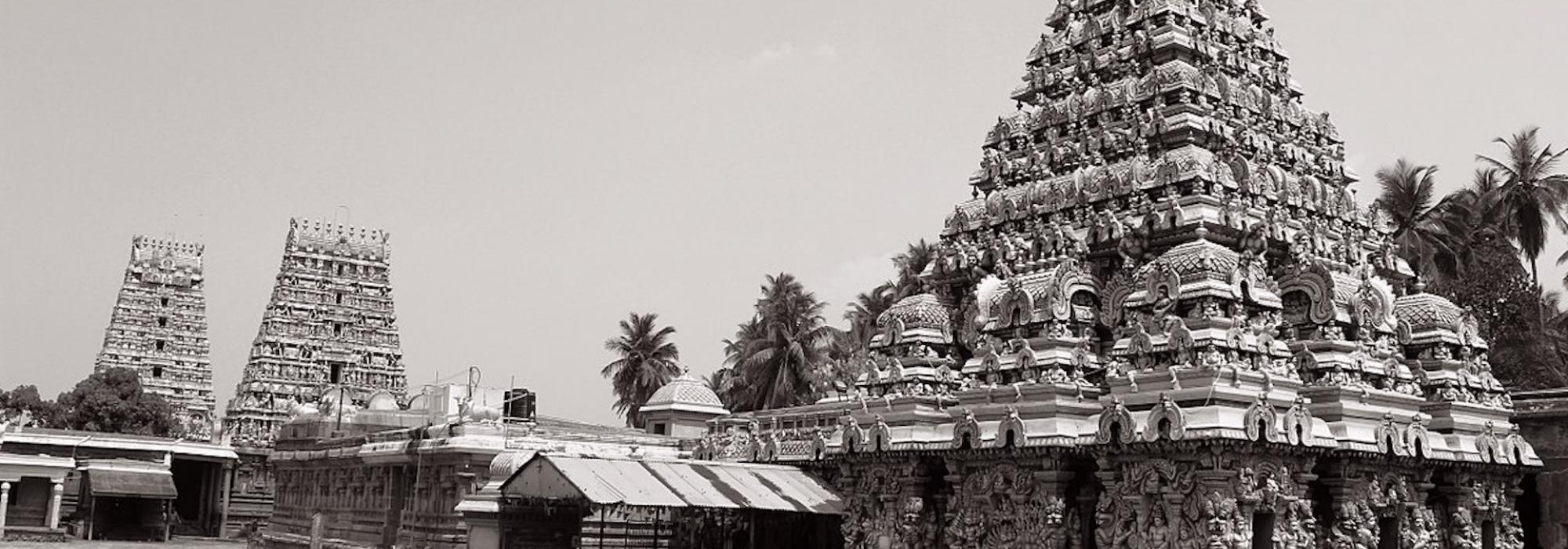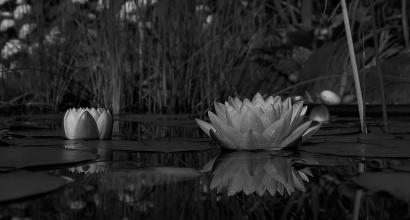As lecturer of Sanskrit Literature at the Central College, Sri Chappalli Visweshwara Sastri earned the gratitude and respect of numerous students. His recitation of poetry didn’t have the sweetness of music because he didn’t have a melodious voice. But the style of his expository commentary was illuminative. He would split each word, explain its origin using examples and then drive home the intent and the feeling of the poet thereby. There’s no greater help to the student than this.
Sri Chappalli Visweshwara Sastri was deeply traditional and large-hearted. Every year, he used to celebrate the Rama Navami (literally, the Birthday of Sri Rama) in his home. Even on other occasions, he would celebrate special Pujas and Parayanas. I once asked:
Me: “You’re a Vidwan. But you appoint other Purohitas when you conduct Shraddha and other rituals at your home. Why is this?”
V: “A Purohita is an essential organ of any Karma (in the sense of ritual). If any ritual is conducted even in the home of a Purohita who is qualified to chant mantras, such a Purohita must essentially appoint another Purohita. This is laid down by our Sastras.”
The Assembly of Chamarajpet Vidwans
It was routine for numerous Vidwans to frequent Sri Chappalli Visweshwara Sastri’s home. Prominent among these were Hoskote Venkatarama Sastri, Narasimha Sastri, Motaganahalli Ramasesha Sastri, Tirumalacharya, Hariyacharya, Garani Krishnacharya, Muttoor Narahari Sastri, and Venkataramanayya from Channarayapattana. And even among them, Motaganahalli Shankara Sastri had the maximum indulgence of Sri Chappalli Visweshwara Sastri.
Sri Chappalli Visweshwara Sastri would sit in his verandah in the evening. The Pandits would presently arrive. Some topic related to Grammar, Alankara (poetics) or commentary would come up for discussion. Sri Shankara Sastri would present a poem that he had composed. Everyone would chat in an atmosphere of great mirth.
Conference at Tiruvadi
In 1911, a conference of Vidwans took place in Tiruvadi (Tamil Nadu). The conference had gathered to discuss the reforms required to be made in several traditions and rules governing the Hindu society. Sri Chappalli Visweshwara Sastri was also in attendance. After he returned from the conference, I did my customary Namaskaram to him as soon as he got down from the train. He was in a happy mood. After exchanging pleasantries, I asked him about the conference. This was how he responded.
V: “Truly eminent scholars were present in the Conference. Professor Malur Rangacharya, Professor Kuppuswami Sastri, Professor Sundararama Aiyer, two High Court judges, some lawyers…they were all in the Conference. All of these worldly scholars [Translator’s Note: in this case, the term “worldly” is used to distinguish a traditional “Vaidika” or Vedic scholar who does not take up a money-earning profession] know Sanskrit as much as we Vedic scholars do. They are also learned in the Sastra texts to the same extent as us. Thus, not only are they aware of our Sastras, they also have a keen knowledge of the ways of the world. This knowledge is unavailable to Vaidikas like me. You talk about the census in contemporary terms? Population, right? Population of the people of different religions, right? What do we know about these matters? Today, numerous scientific miracles are taking place. Those worldly scholars are aware of these miracles. Thus, when we look at it from the perspective of traditional scholarship, those worldly scholars aren’t inferior to us in any manner. In fact, they’re superior to us to a degree. And then there’s the matter of commitment towards and faith in Dharma. Even in this case, it will be dishonest to claim that our commitment is greater than theirs. Indeed, who can honestly say that people like Sri Rangacharya and Sundararama Aiyer have shortcomings in their commitment towards Dharma and compassion towards the world?”
Me: “In which case, did the Vaidika scholars accept their decisions?”
V: “The topics that came up for discussion there are endorsable from the perspective of both the Sastras and the intellect.”
Me: “In which case, you are surely in agreement?”
V: “Some matters are not applicable to me. At my age, is it appropriate for me to marry a widow or even have a second marriage? Some deeply personal matters like these do not touch me. But in general, all of us have agreed to the intent and the decisions taken in that conference. Indeed, any wise person should accept them!”
This then was the humility and broad-mindedness of Sri Chappalli Visweshwara Sastri’s mental outlook.
Largeness of Heart
I visited Sri Motaganahalli Shankara Sastri’s home one afternoon. He was getting ready to leave and beckoned me to accompany him. I asked, “Where?” He said, “Wherever I take you.” He bore great affection towards me. I happily followed him. By the time we reached Sri Chappalli Visweshwara Sastri’s home, he was waiting for us. The Vidwan from Hoskote, Venkataramanayya from Channarayapattana and other scholars were present there as well.
This group departed from the fifth cross road of Chamarajpet and reached Anagondalli Subbanna’s farm located in the street behind the bungalow of Puttanna Chetty. There’s a small temple of Sri Vighneshwara there.
Sri Shankara Sastri tapped on the temple door a couple of times. A Sanyasin opened the door and welcomed all of us in Sanskrit.
The Sanyasin was about thirty-five or forty years old. It appeared that he had spread his saffron robe on the ground and was lying down on it. There were three or four massive books in the place where the pillow would normally be placed. From the manner of his speech, it looked like he was from the Bengal country. He began his conversation in Sanskrit and signaled his pleasure.
Sri Shankara Sastri answered in Sanskrit and pleaded, “We’ve all come here to listen to your nectar-like discourse. You must enlighten us on any topic of your choice.” The Swami said, “What I know is extremely limited. What can I say?” Sri Shankara Sastri requested, “There’s an aphorism titled, AnandamayObhyAsAt in the Anandamaya section of the Brahmasutras. A commentary on that, perhaps?”
The Swami delivered a fifteen or twenty-minute-long discourse on the topic. It was centered around the extent and essence of the suffix, “mayaT.” The entire audience lost itself in his splendid exposition. “What greater fortune is there other than listening to such an exposition!” They conferred among themselves. Sri Chappalli Visweshwara Sastri had remained in rapt silence till then. Then he stood up, wrapped his upper dhoti around his waist, prostrated before the Swami for the second time and said:
“At this moment, we have had the experience of having the Darshan of Sri Adi Shankaracharya himself. We’re blessed. Sri Swami must kindly come to my home for his Bhiksha tomorrow and give me fulfilment.”
The Swami said that he was undertaking a pilgrimage and that he had taken a Vrata of not residing in one village for more than a night.
Accordingly, Sri Chappalli Visweshwara Sastri prayed that he wouldn’t break that vow and that the Swami could come for this afternoon’s bhiksha and resume his journey. The Swami complied much to the delight of all our Vidwans.







































